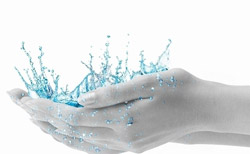COPYRIGHT © 2015-2021
Asian Tec (Guangzhou) Environmental Technology Co., Ltd.
News
Ion exchanger regeneration process

The anion exchanger is the sodium ion exchanger, and the ion exchanger is divided into: sodium ion exchanger, anion and cation bed, mixed bed and other types. The shell of ion exchange column (device) generally adopts hard polyvinyl chloride (PVC), hard polyvinyl chloride composite glass fiber reinforced plastic (PVC-FRP), plexiglass (PMMA), plexiglass composite transparent glass fiber reinforced plastic (PMMA-FRP), steel lining rubber ( JR), stainless steel lining rubber and other materials. Mainly used in boiler, thermal power station, chemical industry, light industry, textile, medicine, biology, electronics, atomic energy and pure water treatment pre-treatment, industrial production requires hard water softening, deionized water preparation, and also used in food Four basic processes: decolorization and purification of drugs, recovery of precious metals and chemical raw materials, and treatment of electroplating wastewater. Plasma exchanger regeneration
1. Small backwash: the purpose is to clean the suspended impurities in the pressure ion exchange resin layer. When the anion and cation exchangers are set behind the reverse osmosis scale inhibitor, the water inflow is very clean, so it is not necessary to do it every time. Perform a small backwash after running ten times.
2. Drain the water: drain the backwash water from it into the exchanger and drain it from the upper part of the exchanger. It usually takes 10-15 minutes to backwash until the effluent is clear. Open the valve and let the water out of the pipe until there is no water in the pipe.
3. Regeneration: Sodium hydroxide is fed into the anion exchanger, and the regeneration liquid flows through the resin layer from bottom to top at a speed of about 5m/h, which is the flow rate of the empty tower.
4. Positive washing: close the drain pipe, open the water inlet valve, wait for the exhaust valve to discharge water, open the positive washing valve, close the exhaust valve, and perform positive washing on the resin. The flow rate is the same as the movement. Until the outlet water quality meets the requirements, open the outlet valve, close the drain valve, and put it into operation
